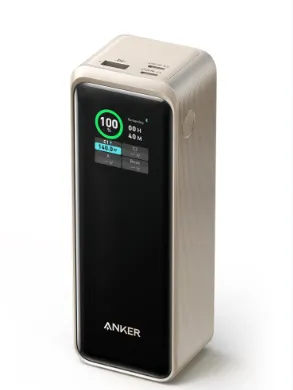With the growing need to keep devices charged on the go, choosing the right power bank has become essential. Whether you’re looking to recharge your smartphone, tablet, or laptop, selecting a power bank that suits your needs can be challenging. Understanding key features and technical specifications will help you find the best option for your device. Below, let’s dive into the most important aspects to consider when purchasing a power bank.
Key Features to Consider When Choosing a Power Bank
Keeping the following points in mind will help you identify the best power bank to meet your charging needs.
1. Battery Capacity
The battery capacity of a power bank, typically measured in milliampere-hours (mAh), is one of the most critical factors. For the mah meaning, simply the higher the mAh rating, the more power the power bank can store, enabling more charges for your device. For instance, a 10,000mAh power bank can fully charge a standard smartphone 2-3 times, while a 20,000mAh power bank can charge it even more.
2. Power Output and Charging Speed
The power output, usually measured in watts (W), determines how quickly a power bank can charge your device. For smartphones, a power bank with a 10W to 30W output is generally sufficient, while tablets and laptops may require 30W or more. Look for power banks with fast-charging capabilities like Quick Charge or Power Delivery (PD) technology to reduce charging time. Ensure that the power bank’s output matches your device’s power requirements to prevent inefficient charging or potential damage.
3. Number of Ports and Types
Consider the number and type of ports the power bank offers. If you plan to charge multiple devices simultaneously, a power bank with at least two USB ports is ideal. Many modern power banks like the Anker Prime 20,000mAh Power Bank include several USB-A and USB-C ports to support various devices, including smartphones, tablets, laptops, and smartwatches. USB-C ports are preferable as they offer faster charging speeds and compatibility with newer devices. This is especially useful if you want to charge both your phone and laptop on the go.

4. Size and Portability
While larger capacity power banks offer more charging power, they also tend to be bulkier and less portable. If you need a power bank for everyday use or travel, choose one that balances power capacity and portability. Compact power banks with 5,000 to 10,000mAh capacity are great for on-the-go charging, while larger models (20,000mAh and above) are better suited for longer trips where size is less of an issue.
5. Build Quality and Durability
Durability is another factor to consider, especially if you frequently travel or spend time outdoors. Opt for power banks with sturdy, shock-resistant builds to ensure they can withstand occasional drops or rough handling. Some models even offer water and dust resistance, which is ideal for camping or hiking trips. A good-quality power bank will not only protect its internal components but also ensure your device’s safety during charging.
6. Safety Features
A reliable power bank should come with built-in safety features such as overcharge protection, short circuit protection, and temperature control. These features prevent overheating and potential damage to both the power bank and your device, ensuring a safe charging experience. Always prioritize safety features when choosing a power bank, especially if you’re investing in a high-capacity model.
Conclusion
Overall, choosing the right power bank involves more than just looking at the mAh capacity. Consider factors like power output, port types, size, and safety features to make an informed decision. Understanding mAh meaning and aligning it with your specific charging needs will ensure you select a power bank that keeps your devices powered up, wherever you go.
